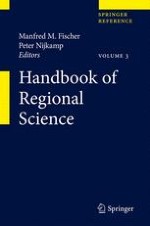2014 | OriginalPaper | Chapter
40. Network Equilibrium Models for Urban Transport
Author : Prof. David Boyce
Published in: Handbook of Regional Science
Publisher: Springer Berlin Heidelberg
Activate our intelligent search to find suitable subject content or patents.
Select sections of text to find matching patents with Artificial Intelligence. powered by
Select sections of text to find additional relevant content using AI-assisted search. powered by
